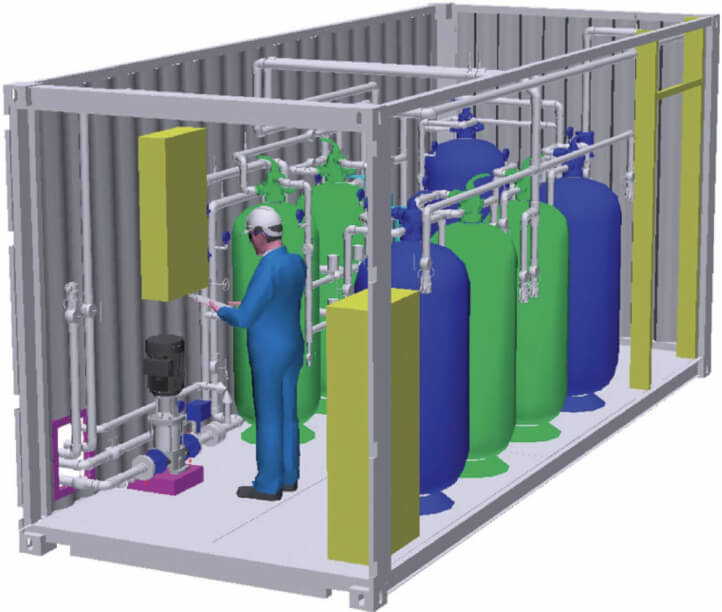System Flowrate
≤ 75 gpm
Treatment System
Sand Filtration + GAC + SORBIX™ PURE
Treatment Objective
<70 ppt
Treatment Outcome Achieved
We Believe The World Needs Better Ways To Treat PFAS
Opportunity
ECT2 was approached by a remote refinery in Alaska that had found PFAS in their wastewater stream. The refinery’s wastewater discharge permit and associated ordinances administered by the local city government required that industrial users adhere to a total PFAS limit of <70 nanograms per liter (ng/L) for wastewater discharged to the local city government wastewater utility. More specifically, the sum of 12 PFAS compounds must be less than 70 ng/L to comply with the City ordinance. The presence of PFAS compounds in wastewater is a common problem faced by any industry that manufacturers, utilizes, or receives PFAS, particularly as the EPA increasingly looks to identify and regulate PFAS sources upstream from municipal wastewater treatment plants (WWTPs). Due to the remote location of this site, and the presence of other (i.e., non-PFAS) contaminants in the waste stream, this project required a team of experts that could react quickly to enable the refinery to meet their compliance goals.

3D Model of selected treatment system.

The SORBIX™ M Series container arrives at the project site.
Challenge
The primary challenge was to provide a wastewater treatment system, within a compressed timeframe, that could effectively treat the waste stream and allow the refinery to meet the refinery’s discharge limit. This challenge was compounded by the presence of co-contaminants in the waste stream, the remote location of the project site, and the need for a system capable of operating in an extreme climate. The client also desired that the efficacy of any proposed treatment approach be demonstrated in the field at a pilot scale before proceeding to full-scale design and construction, and that the full-scale system be mobile, and flexible in terms of flow rates and operation configuration.


Inside view of the SORBIX™ M Series full-scale system.
Solution
ECT2 designed and delivered a SORBIX™ L Series PFAS treatment system for the initial pilot study. The system was comprised of two media vessels, one container granular activated carbon (GAC), and the other with SORBIX™ PURE ion exchange (IX) media, arranged in a lead-lag configuration and capable of treating at a 3-5 gallons per minute (gpm) flow rate. The pilot system operated for a period of three weeks. While influent concentrations were in the order of 300 to 425 ng/L, treated effluent had a maximum concentration of 1.8 ng/L – well below the refinery’s discharge limit. Removal was 99.5 to 100 percent effective in all cases tested and PFAS was reduced to below the 70 ng/L limit, and in most cases, reduced to non-detect. With the pilot study having demonstrated the efficacy of the proposed treatment approach, the client requested that ECT2 design and install a full-scale mobile system. Within three months of client authorization, ECT2 designed, constructed, delivered and commissioned a SORBIX™ M Series, a full-scale system capable of operating at between 35-70 gpm. The system was housed in a weatherproofed and insulated 20-foot Conex box (suitable for Alaskan winters), and included variable frequency drives for flow rate flexibility, back-washable sand filtration and GAC pre-treatment to address co-contaminants, SORBIX™ ion exchange media treatment to address PFAS, and integration of controls with the refinery’s existing treatment system. ECT2 was able to design a construct a system that could easily be configured in a variety of ways, or at different locations, while also offering a process that could be run in parallel, series, or have each vessel operated independently.
Since system startup, the treatment system has been very effective in treatment PFAS to non-detect levels and allowed the refinery to meet its discharge compliance goals.
